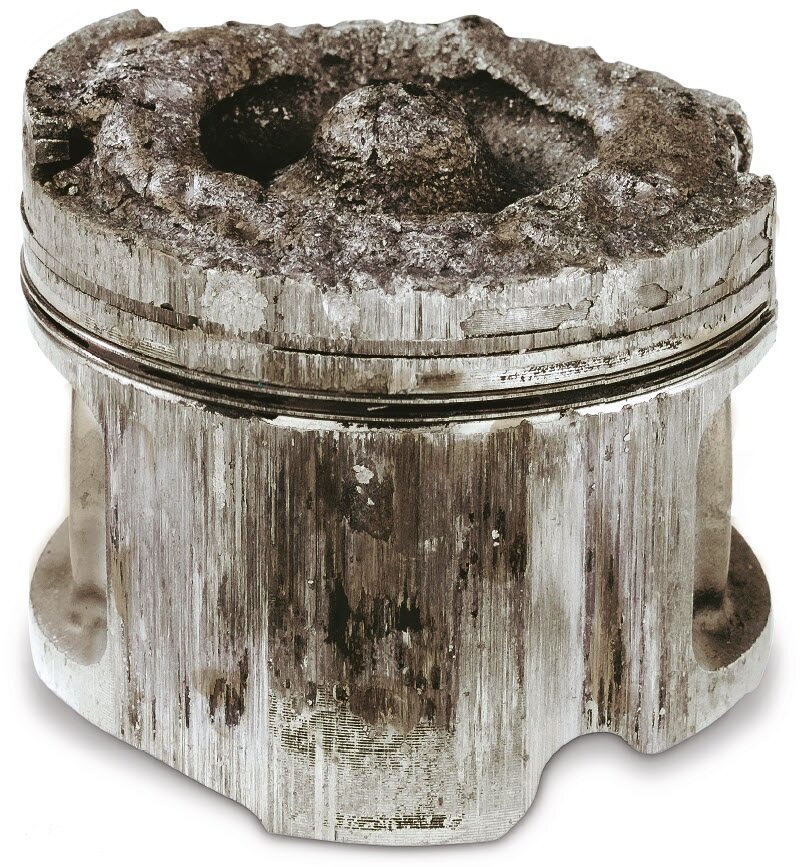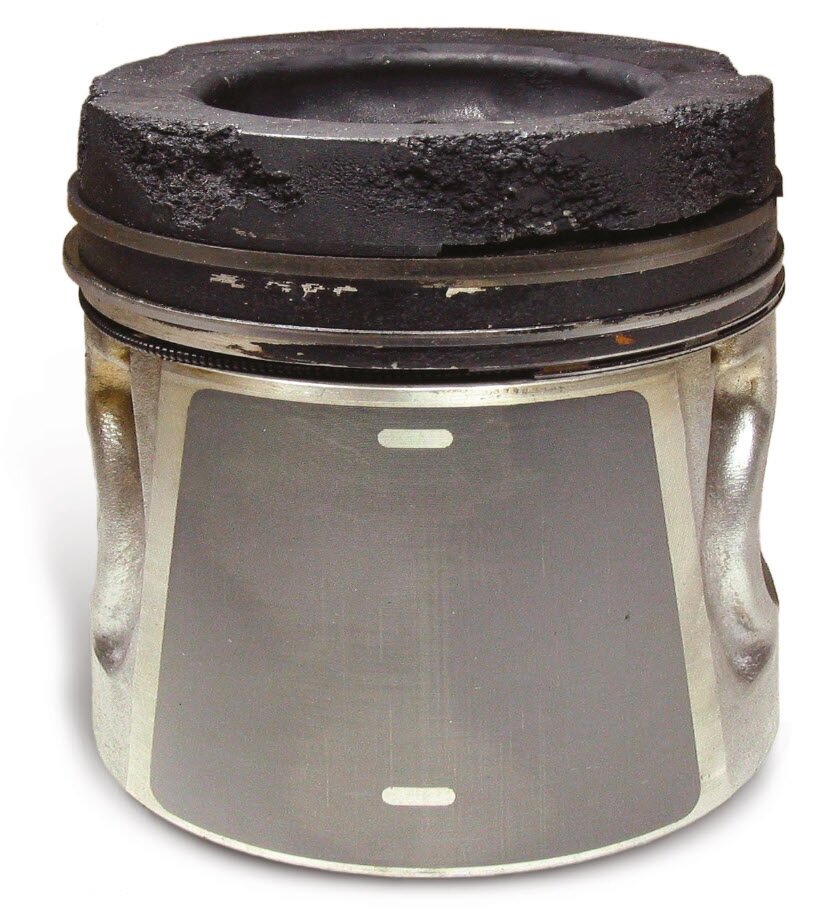Material removal/fusion due to melting on the piston head (diesel engines)
DESCRIPTION OF THE DAMAGE

- Piston head completely destroyed.
- Piston top land melted as far as the ring carrier.
- Seizure marks and damage on the piston skirt due to melted, worn down piston material.
- Ring carrier partially detached.
- Damage (impact marks) in all combustion chambers due to piston material and detached ring carrier parts.
Fig. 2:

- Erosive-type removal of material due to melting on the piston crown or the piston top land in the injection direction of the nozzle jets.
- No seizure marks on the piston skirt or the piston ring zone.
DAMAGE ASSESSMENT
This type of damage occurs particularly on diesel direct injection engines. Prechamber engines are only affected if the prechamber is damaged and the fuel is therefore also injected directly into the combustion chamber.
If, in a diesel direct injection engine, the injection nozzle of the affected cylinder cannot maintain its injection pressure, oscillations in the injection line can cause the injector nozzle needle to lift again. Fuel is injected into the combustion chamber again. If the oxygen has been used up, the fuel droplets stream through the combustion chamber and end up on the piston crown. There they burn away with a great deal of heat and the piston material becomes soft.
The inertia force and the erosion due to the combustion gases speeding past tear out individual particles from the surface (Fig. 2) or carry away the entire piston head (Fig. 1).
If, in a diesel direct injection engine, the injection nozzle of the affected cylinder cannot maintain its injection pressure, oscillations in the injection line can cause the injector nozzle needle to lift again. Fuel is injected into the combustion chamber again. If the oxygen has been used up, the fuel droplets stream through the combustion chamber and end up on the piston crown. There they burn away with a great deal of heat and the piston material becomes soft.
The inertia force and the erosion due to the combustion gases speeding past tear out individual particles from the surface (Fig. 2) or carry away the entire piston head (Fig. 1).
POSSIBLE CAUSES FOR THE DAMAGE
- Leaking injection nozzles or stiff/jammed injector nozzle needles.
- Broken or worn nozzle springs.
- Faulty pressure relief valves in the fuel injection pump.
- Injection quantity and injection timing not set in accordance with the engine manufacturer‘s specifications.
- On prechamber engines: Prechamber defect in conjunction with one of the above possible causes.
- Ignition delay due to insufficient compression caused by excessive gap dimensions, incorrect valve timing or leaking valves.
- Excessive ignition delay caused by diesel that is reluctant to ignite (cetane rating too low).
- Poor charging due to defective turbocharger.
Side info